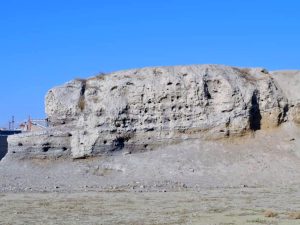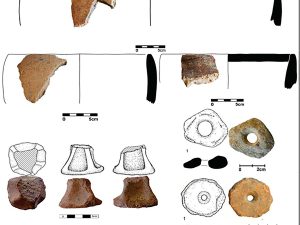Ahranjan Tepe / Ahrendjan Tepeتپه اهرنجان
Location: Ahranjan is a mound on the western outskirts of Salmas, in northwestern Iran, West Azarbaijan Province.
38°12’47.8″N 44°45’19.4″E
Map
Historical Period
Neolithic
History and description
Ahranjan Tepe Kul Tepe is a mound in the western outskirts of the town of Salmas in northwestern Iran. The mound originally covered 3 hectares, but recent modern constructions and farming activities have eaten up a large part of the archaeological site (figs. 1 and 2). At present, the mound covers 1 hectare with a height of approximately 10 m. based on the surface collection of potsherds, the mound is a Neolithic archaeological site.
Archaeological Exploration
Hasan Tala'i conducted a surface collection and an archaeological survey of the mound in 1974 on behalf of the Iranian Centre for Archaeological Research. At the behest of the local branch of the Iranian Cultural Heritage Organization, Bahman Kargar excavated the mound in 1992. Ahranjan Tepe was explored by two local archaeologists, Afrasiyab Geravand and Fatemeh Malekpour on behalf of the Iranian Center for Archaeological Research in 2019.
Finds
Based on the surface collection, most of the finds are painted potsherds similar to those found in the Urmia Basin sites; grinders and mortars in stone, and pieces of obsidian, bones, and spindle whorls (fig. 3).
Bibliography
Geravand, A. and F. Malekpour, “Preliminary Report on Soundings at Tepe Ahranjan,” in Proceedings of the 18th Annual Symposium on Iranian Archaeology, Rohollah Shirazi (ed.), Tehran, 2021, pp. 719-728. In Persian
Tala’i, H., “Pottery Evidence from Ahrendjan Tepe,” Archaeologisches Mitteilungen aus Iran, vol. 16, 1983, pp. 7-17.
Author: Ali Mousavi
Originally published: August 16, 2022
Last updated: January 15, 2025




































































































































